Did you know that the legendary guitarist from the band Queen, Brian May, used coins as guitar picks throughout his professional musical career? Now, you may ask why I am sharing this fact with you.
Besides being interesting, they tell us how important a guitar pick is. I want you to remember that guitar picks play a crucial role in the clear sound guitars produce. Especially if you are a beginner, a pick is a must to get started.
Once you learn how to properly hold a guitar pick, you will be able to pick up new techniques, strumming patterns, and even songs faster.
- How to Choose The Right Guitar Pick?
- Tried and Tested Tips to Hold a Guitar Pick Properly
- How Do You Strum Your Guitar?
- Make Your Own Guitar Pick
- Best Guitar Picks For Beginners
- Which One To Choose - Flatpicking Or Fingerstyle
- How Do You Improve Your Picking Speed?
- Recommended Reads
- Conclusion
- FAQ’s
- 1. What is the best way to hold a guitar pick?
- 2. Which fingers should hold a guitar pick?
- 3. How tight should I hold the pick?
- 4. Should I hold the pick flat or at an angle?
- 5. Can I use different types of picks for different styles?
- 6. How can I improve my guitar picking technique?
- 7. Is it okay to switch pick grips while playing?
- 8. How often should I practice holding a guitar pick?
- 9. Why does my pick slip out of my fingers?
- 10. Can I use my thumb instead of a pick?
How to Choose The Right Guitar Pick?
Choosing the right pick is essential for right playability, especially when you are at the beginner level. Here are a handful of tips to help you out with selecting the right plectrum for you.
Tips to choose guitar pick
Make sure you choose a sharp pointed pick for a clearer sound
Go with a thinner pick for nylon string guitar (under 0.45mm) or an acoustic guitar with steel strings (0.45mm to 0.70mm)
Choose a medium pick (0.60 to 0.80mm) or thicker pick (0.80 to 1.2mm) for playing electric guitar
Tryout light-weight picks to get accustomed to strumming
Try various kinds of guitar picks before closing on the one most suitable
Finally, pick the right guitar pick considering the smoothness and comfort
Plectrums come in all kinds of shapes and sizes. Professional guitarists often make their own picks from different things. However, it is not that easy for a beginner guitar player. According to guitar teachers, one should go with lightweight picks that help you adjust to the strumming pattern faster.
On the other hand, if you are trying to ace the basic riffs, a medium-weight plectrum will be the perfect choice for you. Heavyweight picks are typically used by electric guitarists for playing leads.
Quick Tip: Always buy guitar picks in bulk. No matter how careful you are, you will always lose your pick instantly after putting it down (Believe me, we are all guilty).
If you don’t plan on going back to the store every week, I would suggest you buy at least a dozen whenever you visit the store.
Tried and Tested Tips to Hold a Guitar Pick Properly
Guitar students often find it very difficult to hold a guitar pick properly. Guitar teachers don’t emphasize much on learning how to hold a pick. Although, it is very easy and definitely not rocket science.
What if I told you that learning to hold a guitar pick is just a quick demonstration away! Very Very Important! You have to read through this section. I am fine if you do not read anything else.
This is where you will learn the best tips and strum the Guitar like Eddie Van Halen in style. Remove any fear you have about holding a guitar pick for strumming.
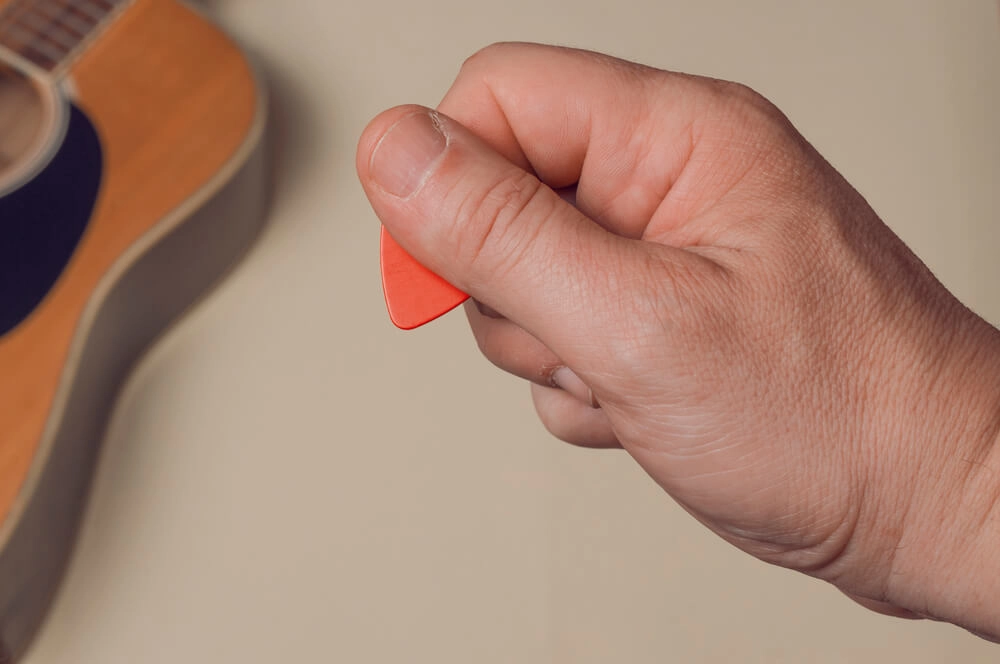
Tips to hold guitar pick
First of all, relax your right hand and form a loose fist with your thumb on the top.
Now, place the pick on your fist, pointing a sharp edge outside, and then place the thumb firmly on top of it.
Don’t stiffen up your wrist and keep a firm yet loose grip to play the guitar fluently.
If you are left-handed, hold the pick in the same manner in your left hand.
Ideally, you should stick out a half-inch of your spectrum bulging out of your clenched fist. This part works as a replacement for your fingers. Picks are used to protect your fingers and to create a clear tone.
If you are playing a particular composition, you need to keep a smaller tip exposed so that you can get accuracy. And if you are playing a chord or strumming a set-piece, you should keep your pick largely exposed so that you can strum faster.
How Do You Strum Your Guitar?
As we move on from the picking patterns, let’s discuss how to strum your guitar properly.
Guitar teachers say that the key to a good strumming style is your

Tips to strum guitar
Sit up straight and hold your guitar slightly bent. Do not rest your picking hand on the guitar; instead, let your hand hover.
Now, pick the plectrum and pluck the strings from the thickest one to down.
Try not to move your arm to strum the guitar; instead, make a habit of moving your wrist with the strumming pattern.
To make your wrist flexible enough for playing guitar, practice wrist movement exercises every day. Rotate your arm while strumming the strings; it will not only make you accustomed to the rhythm but also work as a great wrist exercise.
Try to practice the down-down pattern for the initial days, and then try the down-up-down pattern while playing chords or a few notes.

However, the strumming pattern changes due to the nature of the music you are playing.
Make Your Own Guitar Pick
You can always buy some ready-made plectrums from your local music shop, but making your own guitar pick seems fun. Also, making your own guitar pick out of used materials is an environmentally conscious move.
Pro tip: You all have used a paper puncher from time to time, but have you used a guitar pick puncher? Yes, these tools are real, easy, and super convenient. Buy one to make your own customized guitar picks. Let’s try a few DIY methods to make a personalized guitar pick.
1. Use a coin
When there is a will, there is a ‘coin’. You are about to go up on the stage for your concert and can’t find your plectrum? No worries, you can always use a coin as a guitar pick. In fact, legendary guitarist Brian May from ‘Queen’ and ZZ Top’s Billy Gibbons used sixpence coins as guitar picks.
2. Old Credit/Debit card
There’s no better way to use your old debit or credit card other than making a bunch of guitar picks. Take unused cards and cut them with a guitar pick puncher or a sharp blade in different sizes. Make sure the thing fits perfectly in your hand. Once you find the perfect shape, polish the edges and make it smooth.
3. Old CD/DVD
Use your old CD or DVD to make shiny, stylish guitar picks. CDs are flexible and perfect for shredding and chord playing

Best Guitar Picks For Beginners
Guitar picks are small, but if you don’t choose the right one, it can affect your performance. Although, choosing the right guitar pick can be a tricky job, especially for a beginner.
I would suggest you to buy or make at least three kinds of guitar picks for different occasions, such as: 1. Guitar pick for strumming chords and songs 2. Plectrums for picking 3. Guitar pick for playing jazz, rock, and metal music
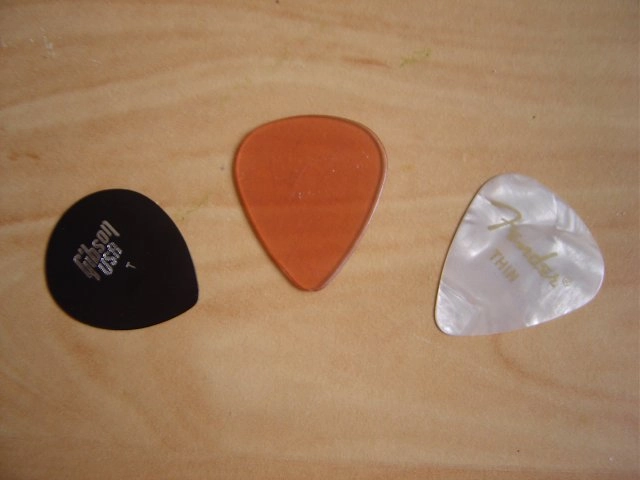
1. Picks For Strumming Ideal thickness:
0.46 mm The ideal pick for strumming should be light and flexible. In my opinion, the Dunlop Nylon Pick Series is the best choice for beginners. These picks are medium-size, so you won’t have any problem holding them between your fingers. These picks make your guitar sound rich and add a little ‘zing’ to it.
2. Picks For Picking Ideal thickness:
0.75 mm Chord picking guitar picks are different from strumming plectrums. Ideally, a picking plectrum should be heavier than a strumming plectrum and less flexible.
Picking a song is a quieter activity than strumming a chord, so you should buy a guitar pick that provides a clean and crisp sound. Advanced guitar picks, like the Fender 551 Classic Celluloid and Ernie ball Prodigy Picks are the best choice for picking songs.
3. Picks For Lead Playing Ideal thickness
1.0 mm Guitar riffs, solos, or one string pieces require thick and heavy guitar picks. Thick plectrums give off clean and crisp sound and also don’t create much noise of their own. You can play Led Zeppelin solos or cool Metallica riffs with these picks. Dunlop Jazz III Nylon picks used by Mark Tremonti and Eric Clapton are the best guitar picks for pros.
Which One To Choose - Flatpicking Or Fingerstyle
Simply put, flatpicking is the practice of using a plectrum or similar object. Plectrums are made of various materials, such as nylon, plastic, fiber, wood, and sometimes metal. The shapes, sizes, designs, purposes, and flexibility of guitar picks vary widely. Other than common picks or plectrums, there are other flatpicking instruments like finger-pick or thumb-pick. However, these are specially used for a few genres and create a particular desired sound.
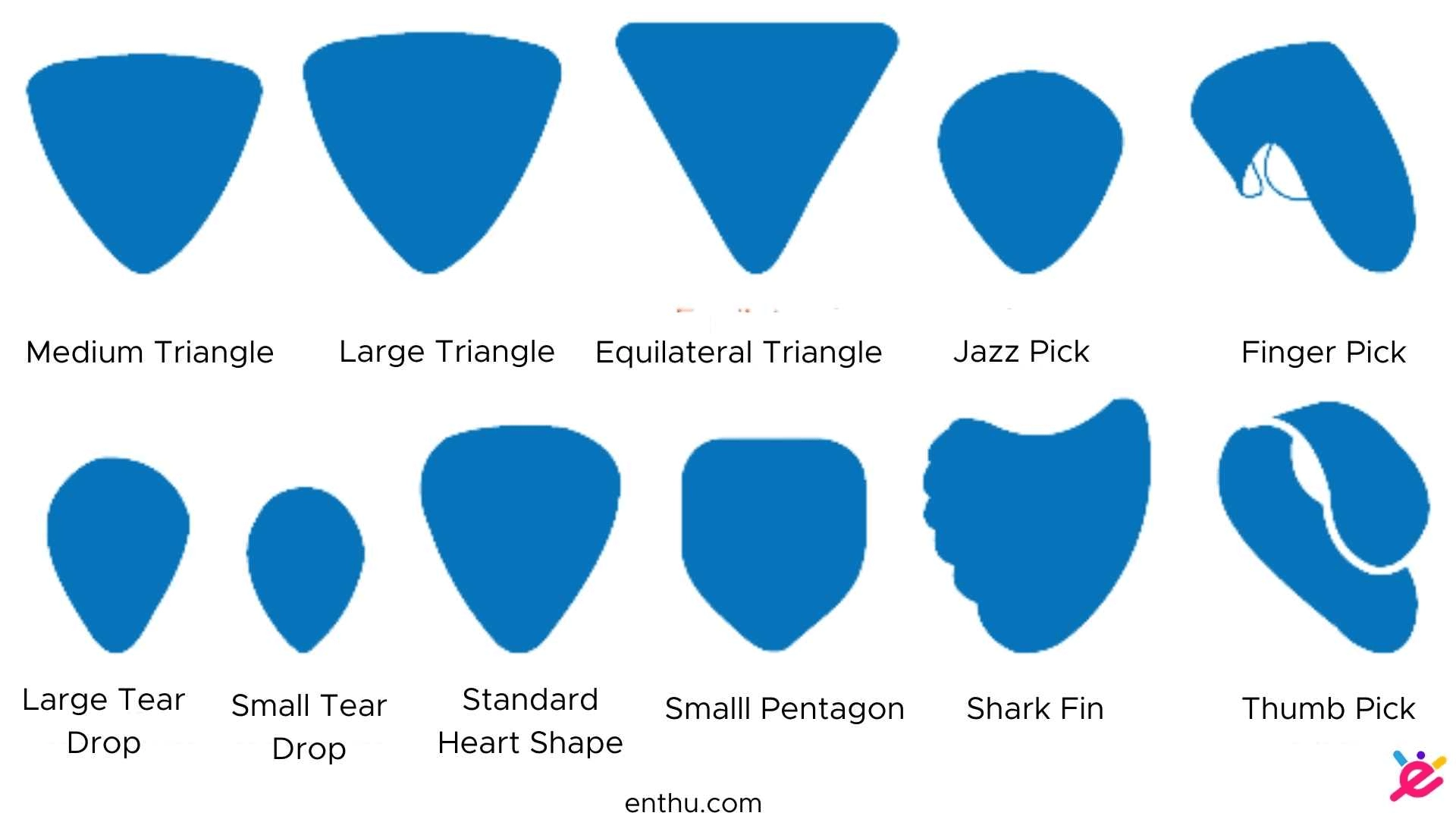
On the other hand, fingerpicking simply means plucking or picking the strings with fingers. According to professional guitarists, it is hard to pluck a string with fingers rather than doing it with picks.
Mainly, your fingernails or fingertips (ideal) are used for fingerpicking. Naturally, the confusion arises when choosing between Flatpicking and fingerstyle. So, which one to choose?
1. Technique
The major difference between finger style and flat-picking is the technique. Flatpicking requires the skills of properly holding a guitar pick, whereas fingerstyle requires the skill of our fingers to pick the strings properly.
Technically, fingerstyle offers your 4 individual picks (4 fingers of your picking hand), so you have the freedom to pick 4 strings at the same time. This technique is very useful for playing complex guitar compositions, especially Jazz and Blues music.
2. Sound and Tone
Another important difference between these two is the tone it produces. Try to play a note with your finger and a pick, and you will be able to tell the difference. Guitar picks give you a consistent, sharp, and clear tone and sound.
On the other hand, fingerstyle creates reverb and offers a blunt and soft tone. Sometimes the quality of the sound is not consistent for fingerstyle, as up strums create a different sound than down strums because down strums use fingernails and up strums use flesh/fingertips while picking.
3. Why Not Learn Both!
As you can understand, both of these picking methods produce different sound quality, tonal effect, sharpness, and pitch. I would suggest you learn both fingerstyle and flat-picking. Learning these two methods will open up new possibilities for you to play the guitar.
You can use your flatpicking techniques while playing a fabulous solo or while shredding. On the other hand, you can play classical pieces, Jazz, and Blues songs with your fingerstyle techniques. Learning doesn't hurt. So, why not learn both and widen your horizon of guitar playing skills!
How Do You Improve Your Picking Speed?
After learning the basic picking techniques, you must be willing to improve your picking speed up a notch. Playing the guitar well requires a well-balanced synchronization of both of your hands.
If you are right-handed, you will have to move along the frets swiftly and also pick the strings in accordance with it. If you genuinely want to play fast compositions, then you will need to hold your guitar pick at a 45-degree angle in relation to the string.
It is a neutral spot for the string, which creates less vibration and the most beautiful sound. Practice hand exercises on a guitar till you can pick up any note randomly from the guitar and start playing from there. It will make your hand swift on the fretboard, and you will be able to pluck with more accuracy.
1. Hand Exercises
Just like stretching before exercising, hand exercises are very important to get warmed up before the final act.
The most popular hand exercise, usually called the
The most popular hand exercise, usually called the 1-2-3-4 exercise can get you pumped up.
1-2-3-4 exercise
Start by putting your first finger on the high E-string and strike the string downwards.
Keep the first position intact and keep the second finger on the 2nd fret and do an upstroke.
Continue the symmetry with the third finger on the 3rd fret with a downstroke.
Finally, do the same with your fourth finger.
Do it for every string following the same pattern. Try to push yourself and do it faster when you get a grasp.
Recommended Reads
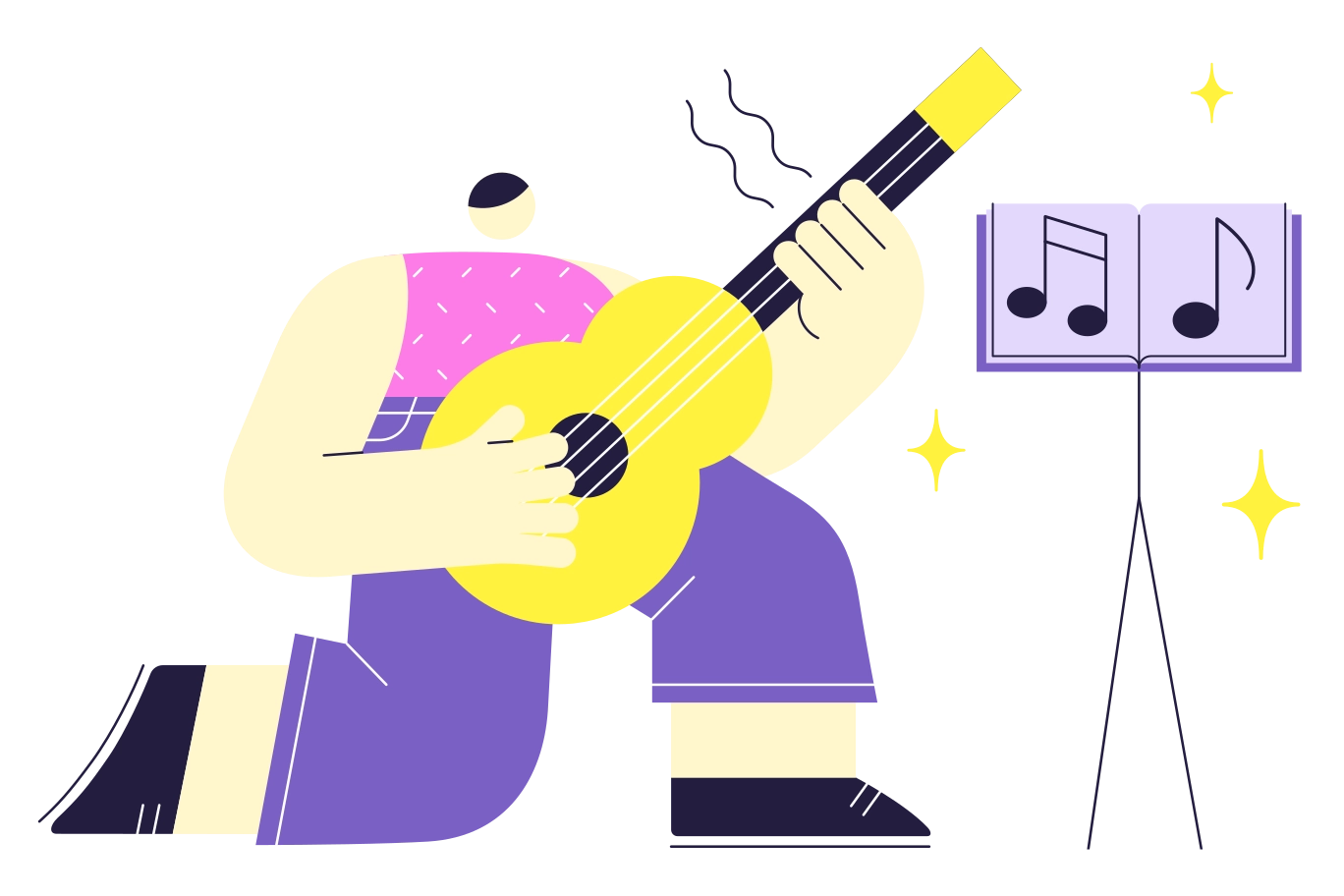
Learn Guitar From Expert Teachers

Conclusion
Holding and using a plectrum or pick is a very crucial thing in your learning process. If you are at the beginning stage, I would suggest you Let me break it down for you:practice your guitar lessons with guitar picks.

It will improve your speed and make you a better player. Always remember that the only way to excel is through practice. You will surely get better, have patience in yourself and dedicate yourself to music.
FAQ’s
1. What is the best way to hold a guitar pick?
To hold a guitar pick properly, pinch it between your thumb and index finger. Ensure that the pick is at a slight angle to the strings, allowing for smooth strumming and picking. The flatter side should face the strings for strumming, while the pointed side is better for picking individual notes.
2. Which fingers should hold a guitar pick?
Typically, you should hold the guitar pick between your thumb and your index finger. Some players may also use the middle finger for added stability, but the most common grip involves just the thumb and index finger.
3. How tight should I hold the pick?
It's important to grip the pick firmly enough to maintain control, but not so tightly that your hand becomes tense. A relaxed grip allows for fluid movement and better sound production. Aim for a balance between control and relaxation.
4. Should I hold the pick flat or at an angle?
Holding the pick at a slight angle to the strings is usually best. This technique helps to produce a clearer sound and allows the pick to glide over the strings more easily, reducing the chance of getting caught or muted.
5. Can I use different types of picks for different styles?
Yes! Different guitar picks can produce varied sounds and are suited for different playing styles. Thicker picks are often better for strumming, while thinner picks are good for intricate picking. Experiment with different materials and thicknesses to find what works best for you.
6. How can I improve my guitar picking technique?
To improve your guitar picking technique, practice regularly using a metronome to develop timing and precision. Focus on your grip and experiment with different picking patterns. Try playing songs that challenge your picking skills and consider taking lessons if you want more personalized guidance.
7. Is it okay to switch pick grips while playing?
Yes, it's completely normal to adjust your grip depending on the complexity of the piece you’re playing. As you become more comfortable, you may find yourself switching between grips for various techniques, enhancing your versatility as a guitarist.
8. How often should I practice holding a guitar pick?
Practicing your pick grip should be part of your regular guitar practice routine. Spend a few minutes focusing on how you're holding the pick each time you play. Consistent practice will help you develop muscle memory and improve your overall technique.
9. Why does my pick slip out of my fingers?
If your pick is slipping out of your fingers, it may be due to a grip that is too loose or sweaty hands. Make sure you hold the pick firmly but not too tight. Using picks with a textured surface or materials that provide extra grip can also help prevent slipping.
10. Can I use my thumb instead of a pick?
Yes, many guitarists use their fingers or thumb instead of a pick, especially in fingerstyle or acoustic playing. This technique can create a different sound and feel. Experiment to find the style that suits you best!
By following these tips and continuing to practice, you’ll develop a solid grip and enhance your overall guitar-playing experience. Happy strumming!


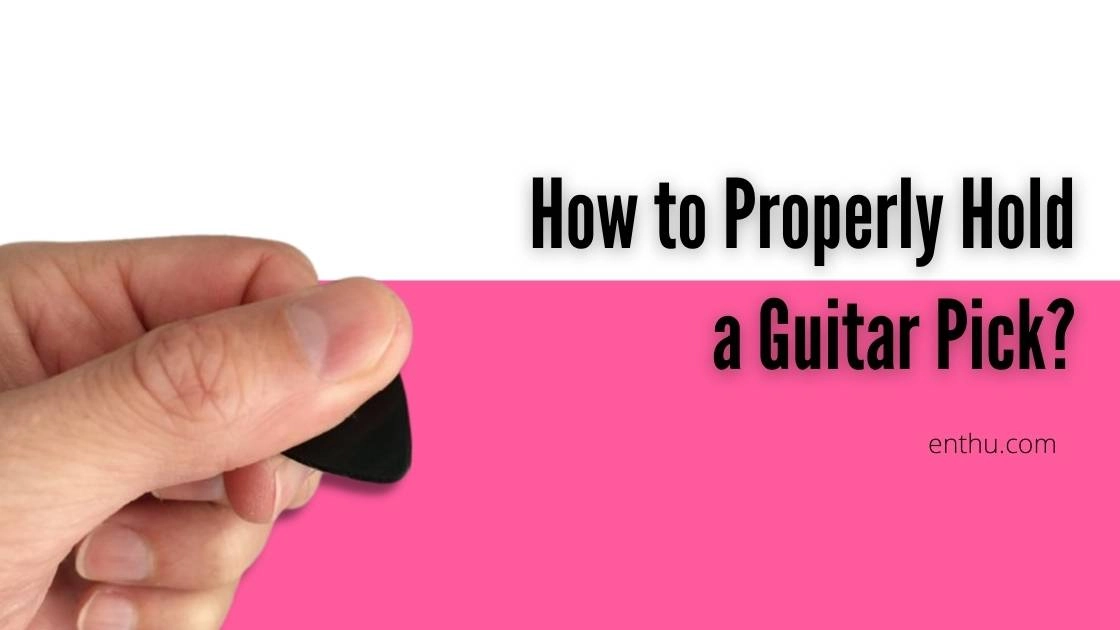

.png)
.png)
Comments